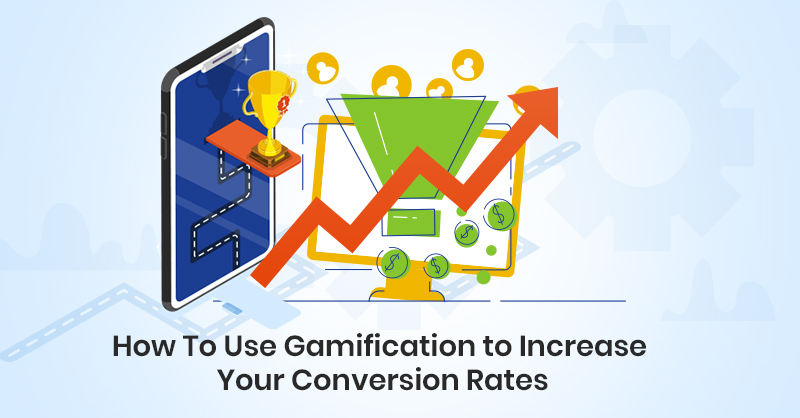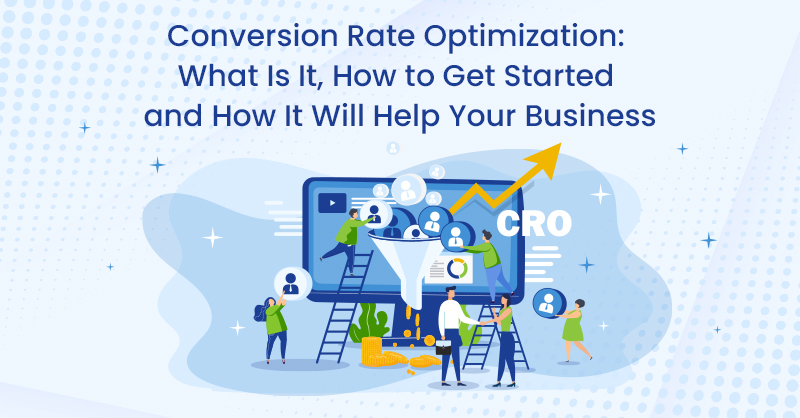Happy prospects are those that are engaged, connected, and know that they as an entity are valued. The same goes for your fellow employees. Getting great engagement from a potential customer (or even your own company) is one of the biggest challenges facing modern workplaces. In a world already saturated by marketing messages, imagery and various other types of media, it can be difficult to cut through the noise. In fact, experts posit that it can take as many as 5-7 impressions per person for a brand to become recognizable.
Internal or external, marketing is never a precise art. There are no guarantees as to whether people will engage with your content and no foolproof method for generating interest in what you have to say.
There are, however, a few techniques that remain - by and large - effective means of encouraging engagement and inciting interaction. When done right, the benefits are hugely rewarding for companies and prospects alike. However, with a new layer of complexity added into the mix, i.e. working from home, lack of human contact and countless other distractions — achieving engagement is more of an uphill struggle than ever before. Difficult? Yes. Impossible? No. All it takes is a little lateral thinking, amazing communication and a smattering of ingenuity.
With over 55% of potential prospects are ignoring marketing efforts because of communication overload, it’s time to look at who is ultimately responsible for creating a more engaging environment. Top-level executives? HR personnel? To some extent, yes. We all play a fundamental role in driving engagement. As marketing professionals, however, it’s our job to engage and inform colleagues and prospects alike through effective and exciting communications. It’s our job to discover some common ground; a single unifying reason that makes people from all backgrounds want to actively engage.
A Game of Give & Take
As with most things in life, marketing is a game of give and take. It’s not enough to expect people to give information to you, or even engage with your content ‘just because.’ You have to incentivize your audience and give them a reason for wanting to interact with your content. Prospects are much more likely to interact with marketing collateral if they see something that offers them value.
An incentive could be monetary; it could be an exchange of useful information or even just recognition. The list goes on. As long as you can provide something that either reciprocates the value of their interaction, the more chance you have of getting people to have meaningful reactions from your content.
In order to reverse the negative pattern of no interaction, we need to present our communications as something other than what’s traditionally observed. Rather than expecting to receive, we should be more open to giving. Enter gamification.
A technique employed by many modern-day businesses to increase engagement, gamification presents ordinarily mundane tasks in a more competitive and potentially rewarding light. It’s not about playing games or freebies - it’s about motivation and providing an incentive to act. Incentive based marketing is an extraordinarily dynamic way to influence and motivate those you want to engage with your material. Gamification is so compelling that employees are 90% more productive when competitive dynamics are added to their daily workday. Yep, you guessed it; it’s the same story for external marketing.
Games and competitions are designed to be entertaining and stimulate our brains. Every time we are rewarded or have a positive experience, whether physical or virtual, our brain is flooded with dopamine, the feel-good hormone. This is why gamification is an incredibly powerful tool in engagement and content marketing. Using gameplay makes activities and tasks, things seen as an obligation before, into something fun and challenging that stimulates positive emotions. We learn best through positive reinforcement, and providing a reward to those who participate in encourages them to become active and constant contributors. With a motivation + reward system, employees and prospects find more layers of engagement that satisfy their basic human desires for competition, reward and achievement.
Methods of Gamification
Want to make your content irresistible to your prospects and colleagues alike? Here are a few methods to put to the test work within your everyday marketing strategies.
1. Gated Content
The play: To give is to receive. Well, at least that’s the case with gated content. More applicable to outbound marketing, the idea is to get as much relevant information as possible by giving something equally valuable in return. By offering something valuable, you’re not only increasing the chances of getting new leads, but you’re also providing real utility to an individual that is actively in the market for your product. Design specific landing pages orientated around gathering data and extracting information from potential prospects. Produce helpful guides and whitepapers that offer genuine insight for your audience and offer them in exchange for personal details.
The reward: By offering a high-grade piece of content specific to the user’s needs (and not just superficial clickbait), the prospect will not only leave the exchange feeling more enlightened than what they were when they came into the scenario, but they’ll be more invested in your proposition and more inclined to do business with you in the future. It’s a win/win situation.
2. Likes & Interaction
The play: Receiving kudos for a great post is a fantastic motivator, especially when it comes from peers. When an employee shares a link or makes a witty observation and their colleagues give a thumbs up, that employee is encouraged to contribute more.
The reward: Employees receive recognition, status as a positive influence and have a medium for self-expression.
3. Challenges & Obstacles
The play: Host weekly trivia quizzes, t-shirt design, office scavenger hunt, and provide content designed to challenge and engage your team. Exciting prizes, like an Amazon Echo or donation to their charity of choice, make challenges more competitive and fun.
The reward: Entire teams, even departments, can compete against one another for a prize. Teamwork improves as people are working together towards a common goal that isn’t just work. There is also a collaborative sense of altruism when competing to benefit a favourite charity.
4. Refer a Friend
The play: Great for sales and lead-generation efforts, refer a friend schemes offer your audience exclusive deals in exchange for access to a designated contact that they provide. By providing an incentive to prospective customers at the expense of referring their friends to your product, you’re not only widening your customer base but building a loyal customer base built entirely by a legion of brand-advocates. The reason why refer a friend schemes are so popular is due to the minimal effort required by participants.
The reward: Offering your audience an exclusive discount or bonus for introducing their friends to your product or service seems (at least in your prospects eyes) to tip the scales in their favour. Discounts, deals and other incentives given in exchange for information your prospect has readily available may be viewed as a largely positive transaction. Participants are incentivized to act through a perceived lack of effort and low risk vs. high reward.
Play into people’s fundamental desires for achievement, reward, and self-expression (among many others). These motivations are universally felt across all manner of people – from interns to the CEO – everyone is motivated in some way or form that just needs to be engaged. By implementing a system of incentivization or pushing a generally competitive slant that supports a motivation + reward system, engagement and interaction will improve exponentially across your marketing efforts.
Keep it Personal
Regardless of whether you’re marketing at a B2B or B2C level, you’re marketing to people. One may have more corporate interests in mind, of course, but it’s imperative to make your marketing relatable, exciting and geared towards addressing their needs. Behind every multi-million business are scores of individuals, each with their own opinions, viewpoints and preferences.
Personalized External Marketing
Remember to bear your audience in mind and always try and make your message more relatable to them. How can you incentivize them to act? To provide an incentive isn’t always as simple as a physical reciprocation. Sometimes, it can be as little as an emotional impulse or being inspired to take action by relativity and comfort. This notion can be particularly powerful when applied within the realms of content marketing. By providing a particular audience with a case study that is relevant to them, for example, ‘how we helped businesses in the retail industry increase leads by ‘X%,’ other similar industries will be incentivized to act based off of seeing someone that they perceive as similar to themselves achieving success.
Personalized Internal Marketing
Elect team representatives, aka Content Captains, to take charge of and make engagement a daily priority. One main thing to know is that it’s difficult for employees to engage if they don’t trust their bosses, so it's imperative that Content Captains are respected, well-liked members of their department passionate about creating healthy and happy teams.
Here are three tips to effectively support your Content Captains:
1. Allow Content Captains to succeed by training them on how to lead constructive, honest discussions. They’ll learn to handle sensitive topics, how to interact, and actively engage with team members.
2. Give Content Captains the authority to decide on the right course of action so they can problem-solve with their team. They’ll be able to address issues quickly and communicate back the outcomes to their team.
3. Be receptive to constant, anonymous feedback. An effective way to hear what employees are thinking is through monthly, short and anonymous surveys. Employees will have the confidence to bring up issues or concerns without the fear of reprisal, and Content Captains are given an honest and better understanding of team dynamics. But it all goes to waste if Content Captains are unable to bring up issues to higher-ups.
Summary
To make people invest in your content, you must make it worthwhile and relatable to their overall needs. It’s basic psychology. People rarely do things simply for the sake of doing them. There must be some sort of reward. Whether that be the satisfaction of getting something in return, learning something new or being praised, it’s important that as marketers, we are prepared to give as much as we are prepared to receive. Unfortunately, it’s not often enough to expect somebody to interact with your content simply because it’s there. Whilst a small margin of people will inevitably interact with your content, it pays to use an incentive to push them over the edge to the point of interaction.
For so many marketers (myself included), we can grow complacent with shoving what we have to say in people’s faces without providing the recipient with any real value or take-away. Regardless of how targeted and granular your communications are, if there isn’t value to your audience, you're bound to fall short of the mark. Of course, there are procedures that you can take to increase traffic and get eyes on your website (SEO optimization, efficient targeting, high-quality content). Still, sometimes it just takes a little bit extra to get people interested in what you have to say. Remember, when it comes to engagement, it’s a two-way street built on respect, value and reciprocation. Nothing in this life comes for free.





